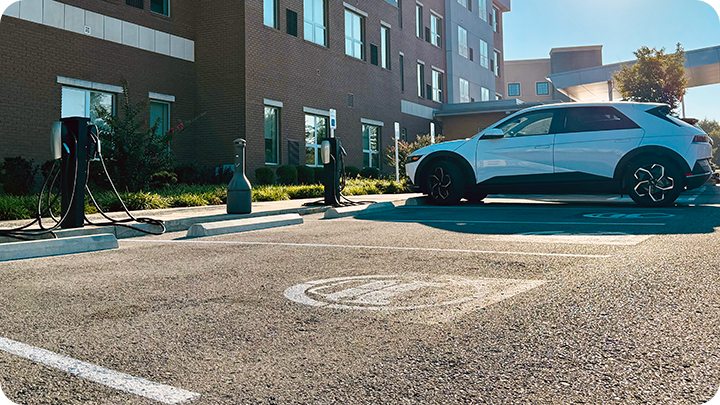The vast expanse of the American landscape offers an exquisite palette of natural beauty, with its boundless horizons and winding roads beckoning the adventurous spirit. Consider the electric car—an emissary of environmentally conscious technology—embarking on a cross-country odyssey. Would it succeed in navigating this expansive theater of terrain? The answer is as multifaceted as the journey itself.
Firstly, the ramifications of range anxiety—an affliction endemic to electric vehicle (EV) travelers—cannot be overstated. Just as a sailor may ponder the depths of the ocean while adrift, a driver must contemplate the vagaries of charging stations strewn along highways. The United States, replete with its vast stretches of forests, deserts, and mountains, is also dotted with an evolving infrastructure dedicated to electric mobility. Major highways are increasingly flanked by charging stations, often strategically placed at rest stops, hotels, and even grocery stores. Yet, a meticulous planning phase is indispensable for those wishing to traverse the nation in an electric car.
To embark upon such a journey demands a comprehensive itinerary, mapping charging stations alongside picturesque roadside attractions. Each leg of the trip may become a microcosm of exploration, with opportunities to engage with the local culture, savor regional cuisine, and bask in the unique geological features of the landscape. Just as a plot twist enriches a narrative, the unanticipated discoveries along the journey weave a rich tapestry of experience, transforming a mere road trip into a profound adventure.
Furthermore, the array of EV models available serves as both a boon and a challenge. From the compact and efficient models designed for urban commuting to hefty SUVs with robust battery packs, the selection presents a plethora of options. One’s choice of vehicle could significantly influence both the performance and the pleasure derived from the journey. The Tesla Model Y, with its extensive Supercharger network, epitomizes the fusion of convenience and technology, whereas alternatives may offer distinct advantages in terms of cost-efficiency or sustainability. Thus, selecting the right vehicle becomes an exercise in balancing preferences with practical realities.
As one considers the nuances of an electric road trip, an essential aspect emerges: the role of time. The rapid charging options available in certain EVs allow for expedient top-offs while offering the traveler a moment to rest, refuel, and refresh. However, these stations may be less ubiquitous in more remote areas, where traditional gas stations stand sentinel. This raises the intriguing question of time management; will the traveler savor their journey, or rush from one destination to the next? The time spent waiting at a charging station can be recalibrated into reflective moments—or opportunities for exploration—transforming idle time into culturally enriching experiences.
Additionally, the ecology of the American landscape plays an instrumental role in shaping the journey. The electric vehicle, powered by clean energy, symbolizes a commitment to reducing one’s carbon footprint—an intrinsic motivation that resonates deeply with many modern travelers. A journey through national parks, while supplanting fossil fuel consumption with renewable energy, creates a harmonizing synergy between the adventurer and the environment. Witnessing majestic vistas without contributing to their degradation becomes a compelling facet of the narrative.
Moreover, the advent of advanced technology in contemporary electric vehicles has ushered in an era of unprecedented convenience. Navigation systems tailored to electric cars can provide real-time updates on charging station availability, optimal routes, and local amenities. Not unlike a skilled cartographer mapping uncharted territory, these systems ensure the traveler remains well-informed. This technological augmentation, steeped in innovation, renders the road trip a seamless blend of adventure and assurance.
As the traveler ventures further into the diverse tapestry of the U.S., they may find solace in the connectedness afforded by EV communities. Online forums and social media platforms offer virtual support networks for those undertaking electric road trips. By cultivating these connections, the electric car enthusiast becomes part of a collective narrative—sharing tips, experiences, and newly unearthed charging locations. Analogous to the camaraderie found among shipmates at sea, this community bolsters morale and inspires confidence for the journey ahead.
However, notwithstanding the myriad benefits, challenges remain. Adverse weather conditions can be a formidable adversary, impacting battery performance and efficiency. Cold climates exacerbate range anxiety, while excessive heat may influence charging times. Consequently, travelers must remain vigilant and prepare for unforeseen vicissitudes of nature. This intrinsic adaptability could well define the electric road trip, as navigating both physical and emotional terrains may yield an unparalleled journey characterized by impressive resilience.
Ultimately, an electric car can indeed be used for a road trip across the United States, offering a transformative experience that poignantly marries technology and nature. The path carved by electric vehicles is still nascent, yet its potential is boundless. Much like the rivers that course through the valleys of America, the journey continues to evolve, carving new pathways of exploration and innovation. The future of road trips is electric, inviting a generation of eco-conscious adventurers to embark on journeys that resonate with both revelation and responsibility.












